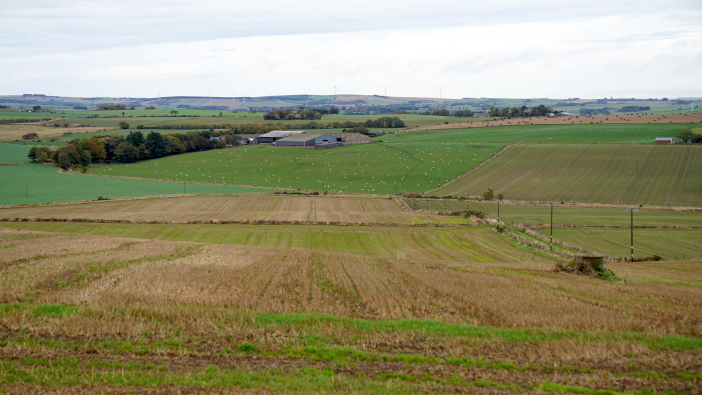Following growth across all types of agricultural land in 2023, Carter Jonas is predicting that the trend will continue this year.
The latest Farmland Market Update, produced by the company, indicates strong market performance in the face of inflation and rising borrowing costs.
Average arable values increased by 3.8% in 2023, rising to £9,583 per acre. Similarly, pasture rose by 3.7% to £7,750 per acre.
Andrew Chandler, head of Rural Agency, explained that while the market has been impacted by the current economic fluctuations, it has been resilient due to the prominence of cash buyers.
“We have seen an uptick in debt-driven launches bringing more supply to the market in recent months, and growth in capital values has slowed,” he said. “Yet, the prominence of cash buyers means that land values are less exposed to increasingly expensive debt than other property markets.
“Significantly, many landowners have sold land for development purposes over the past couple of years and need to ‘rollover’ the funds within a three-year timeframe to defer Capital Gains Tax. As a result of supply levels being historically low, many of these sellers have not yet found a new asset, resulting in a pool of ‘waiting cash’.”
Winter saw a slight fallback in supply as the economic outlook improved, with inflation falling faster than expected. However, farmland continued to increase in value, with arable ground up by 0.7% and pasture up by 0.9%.
“Secondary and tertiary pasture values continue to outpace most other land types,” Andrew explained. “This is led predominantly by the South and the East of England and correlates with a more advanced natural capital market.
“These evolving natural capital markets are bringing an increasing array of purchasers to the market. With the introduction of mandatory Biodiversity Net Gain on 12 February, the number of natural capital buyers will accelerate. It will also offer opportunities for landowners who wish to diversify their income streams.”
The company has monitored responses to the change in support payments, as well as concerns over food security, and believes that this scrutiny is likely to intensify over the next 12 months. However, some environmental schemes are now looking to complement food production.
“Some rates have shifted upwards significantly, which is likely to encourage more businesses to opt in,” Andrew said. “Defra’s most recent changes in January set out the aim of: “Seeing 65% of farms adopt nature-friendly practices on 10 to 15% of their land.”
“We can expect the year ahead to be defined by accelerated structural change, with private and public environmental schemes looking more appealing. Initial signs suggest this may be less to the detriment of food production.”
The agricultural sector will now be paying close attention to the political situation, with a General Election expected to take place and political parties making various promises during their campaigns.
“We’ve already heard promises about energy prices and protecting domestic food production, and this will only accelerate to win rural votes,” he concluded. “I expect there will also be comments on the labour market as labour is short and wages are rising, which is a major issue for agribusinesses.”
For more information go to www.carterjonas.co.uk



